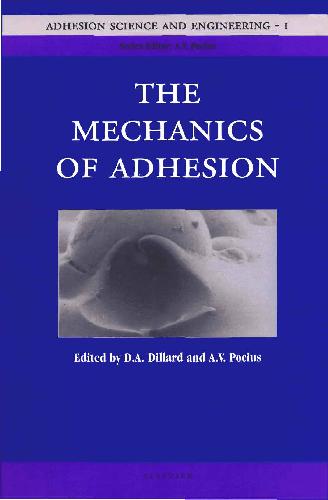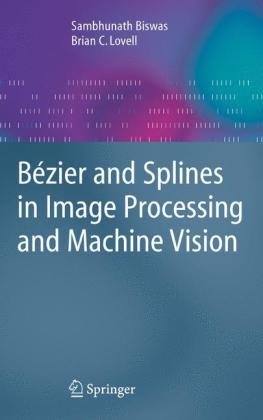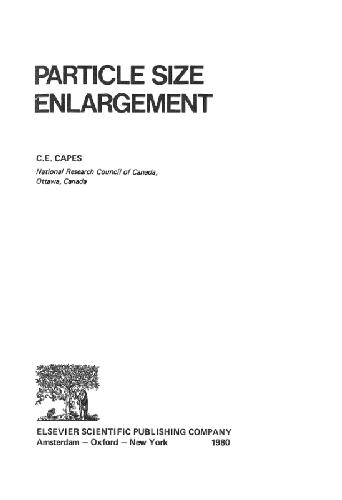Pocius A.V., Dillard D.A.
Table of contents :
Cover……Page 1
Half Title Page……Page 4
Title Page……Page 6
Copyright……Page 7
Preface……Page 8
Table of Contents……Page 10
1.1. Introduction……Page 12
2. Applications of Mechanics to Bonded Systems……Page 15
3. Structural Elements in Bonded Joints……Page 24
4. The Shear Lag Model……Page 33
5. The Beam on Elastic Foundation Model……Page 39
6. Residual Stresses in Adhesively Bonded Joints……Page 43
7. Applications of Fundamental Stress Transfer Solutions……Page 46
8. Strength and Fracture Approaches to Adhesive Bonds……Page 50
1.9. Summary and Conclusions……Page 51
2.1. Introduction……Page 56
2. Cohesive Cracking……Page 57
3. Adhesive Cracking……Page 67
4. Crack Growth in Sandwiched Layers……Page 71
5. Crack Nucleation from Bimaterial Corners……Page 76
6. Nonlinear Effects……Page 79
7. Crack Opening Interferometry……Page 82
2.8. Conclusions……Page 85
3.1. Introduction……Page 88
2. Key Advances in the Energy Argument……Page 89
3. Wedging……Page 92
4. Elasticity in the Energy Balance……Page 94
5. Change in Elastic Linkage as the Crack Progresses……Page 95
6. Elastic Linkages Easing Failure of Film Adhesion……Page 96
7. Calculation of the Elastic Energy Terms……Page 98
8. Exact Stress Analysis……Page 101
9. The Nature of the Cracking Equilibrium……Page 105
10. Measure of Molecular Bonding Energy and Range……Page 108
11. Non-Equilibrium Adhesion……Page 111
12. Causes of the Non-Equilibrium Adhesion……Page 112
13. Adhesive Drag……Page 115
14. Adhesive Drag and Hysteresis Measurements……Page 118
3.15. Conclusions……Page 119
4.1. Introduction……Page 122
2. Finite Element Analysis (FEA)……Page 124
3. Algebraic Analyses……Page 140
4. Prediction of Failure for Single Lap Joints……Page 142
5. A Simple Predictive Tool……Page 150
4.6. Conclusions……Page 152
5.1. Introduction……Page 156
2. Interface-Corner Stress State……Page 159
3. Critical Ka Fracture Criterion……Page 160
4. Calculating Ka……Page 161
5. Ka Calibrations……Page 164
6. Limits on the Applicability of a Kac Failure Analysis……Page 175
7. Experimental Studies……Page 184
8. Unresolved Issues……Page 195
5.9. Conclusions……Page 200
6.1. Introduction……Page 204
2. Standard Mechanical Tests……Page 209
6.3. Conclusions……Page 244
7.1. Introduction……Page 246
2. Fracture of Joints with Elastic Adherends……Page 256
3. Fracture of Plastically Deforming Adhesive Joints……Page 266
7.4. Summary……Page 275
8.1. Introduction……Page 284
2. Analytical Approaches……Page 285
3. Experimental Results……Page 300
4. Concluding Remarks……Page 310
9.1. Introduction……Page 314
2. Measurement of Mechanical Properties……Page 315
3. Analysis and Measurement of Stresses in Coatings and Thin Films……Page 328
4. Analysis of Adhesion and Interfacial Fracture Toughness of Coatings……Page 331
9.5. Summary……Page 354
10.1. Introduction……Page 362
2. Mechanical Properties of Elastomeric Adhesives Contrasted to Rigid Adhesives and Substrates……Page 363
3. Stress Distributions in Butt Joints……Page 374
4. Measuring Fracture Energy……Page 379
5. Designing with Elastomeric Adhesives……Page 394
11.1. Introduction……Page 400
2. Experimental Studies……Page 407
3. Analytical Studies……Page 435
4. Implications for Selecting and Interpreting Adhesion Tests……Page 448
11.5. Summary……Page 450
12.1. Introduction……Page 454
2. Kinematics and Dynamics……Page 455
3. Balance Laws2……Page 460
4. Linear Viscoelasticity……Page 462
5. Constitutive Equations……Page 472
6. Rheometry……Page 494
12.7. Additional Examples……Page 501
2. Interfacial and Rheological Requirements of Adhesives……Page 510
3. Rheology and Common Performance Tests……Page 515
4. Viscoelastic Windows of Performance……Page 523
5. From Rheology to Peel Force……Page 524
6. Polymer Structure and Formulation Effects on PSA Rheology……Page 537
13.7. Summary……Page 543
14.1. Introduction……Page 546
2. Experimental Methods……Page 547
3. Analysis of the Bonding and Debonding Mechanisms……Page 549
4. Molecular Structure and Adhesive Properties……Page 557
5. Influence of Experimental Parameters……Page 571
6. Surface Effects……Page 579
14.8. Further Reading……Page 584
2. Fundamental Contact Expressions……Page 588
3. Inclusion of Adhesive Forces……Page 593
4. Contacting Cylinders and Rolling Contact Mechanics……Page 602
5. Accounting for Linear Viscoealstic Effects……Page 604
15.6. Summary……Page 613
1. Fiber-Matrix Adhesion Measurement Methods……Page 616
2. Pull-Out and the Microbond Technique……Page 625
3. Single-Fiber Fragmentation Technique……Page 633
4. Microdebonding-Microindentation Technique……Page 651
5. Advantages and Limitations of the Methods……Page 662
16.6. Summary……Page 664
17.1. Introduction……Page 672
2. Mechanisms of Environmental Attack……Page 675
3. Kinetics of Environmental Attack……Page 692
4. Life Prediction Models……Page 700
17.5. Concluding Remarks……Page 706
18.1. Introduction……Page 710
2. Normal Beam Ultrasonics……Page 720
3. Oblique Incidence Techniques……Page 722
5. Sample Dispersion Curve and Wave Structure……Page 723
6. Acoustic Microscopy Techniques……Page 730
19.1. Introduction……Page 736
2. The PABST Adhesively Bonded Wide-Body Fuselage……Page 738
3. Relief from Induced Peel Stresses……Page 741
4. The Origin of Induced Peel Stresses……Page 743
5. The Origin of, and Need for, Nonuniform Adhesive Shear Stresses……Page 744
6. Adverse Effect of Stiffness Imbalance between Adherends……Page 746
7. Detrimental Consequences of Adherend Thermal Mismatch……Page 748
8. Effect of Overlap Length on Strength of Bonded Joints (with no Eccentricities in Load Path)……Page 750
9. Effect of Operating Environment on Joint Bond Strength……Page 755
10. The Elastic-Plastic Adhesive Shear Mathematical Model……Page 757
11. Effect of Adherend Material on Adhesive ‘Lap-Shear Strength’……Page 761
12. Ultra-Simplified Analysis Techniques for Bonded Structures……Page 762
13. Stepped-Lap Joints to Apply Bonding to Thicker Structures……Page 764
14. Effects of Flaws, Porosity, and Variations in Bond-Line Thickness……Page 770
15. Two – Dimensional Load Redistribution Around Flaws and Damage……Page 774
16. Single-Lap and Single-Strap (Flush) Joints with Primary Eccentricities in Load Path……Page 776
17. Bonded Joints with Directly Applied Peel Loads……Page 779
18. Step-by-Step Design Procedures……Page 780
19. Concluding Remarks……Page 785
Author Index……Page 790
Subject Index……Page 792
Back Cover……Page 806







Reviews
There are no reviews yet.